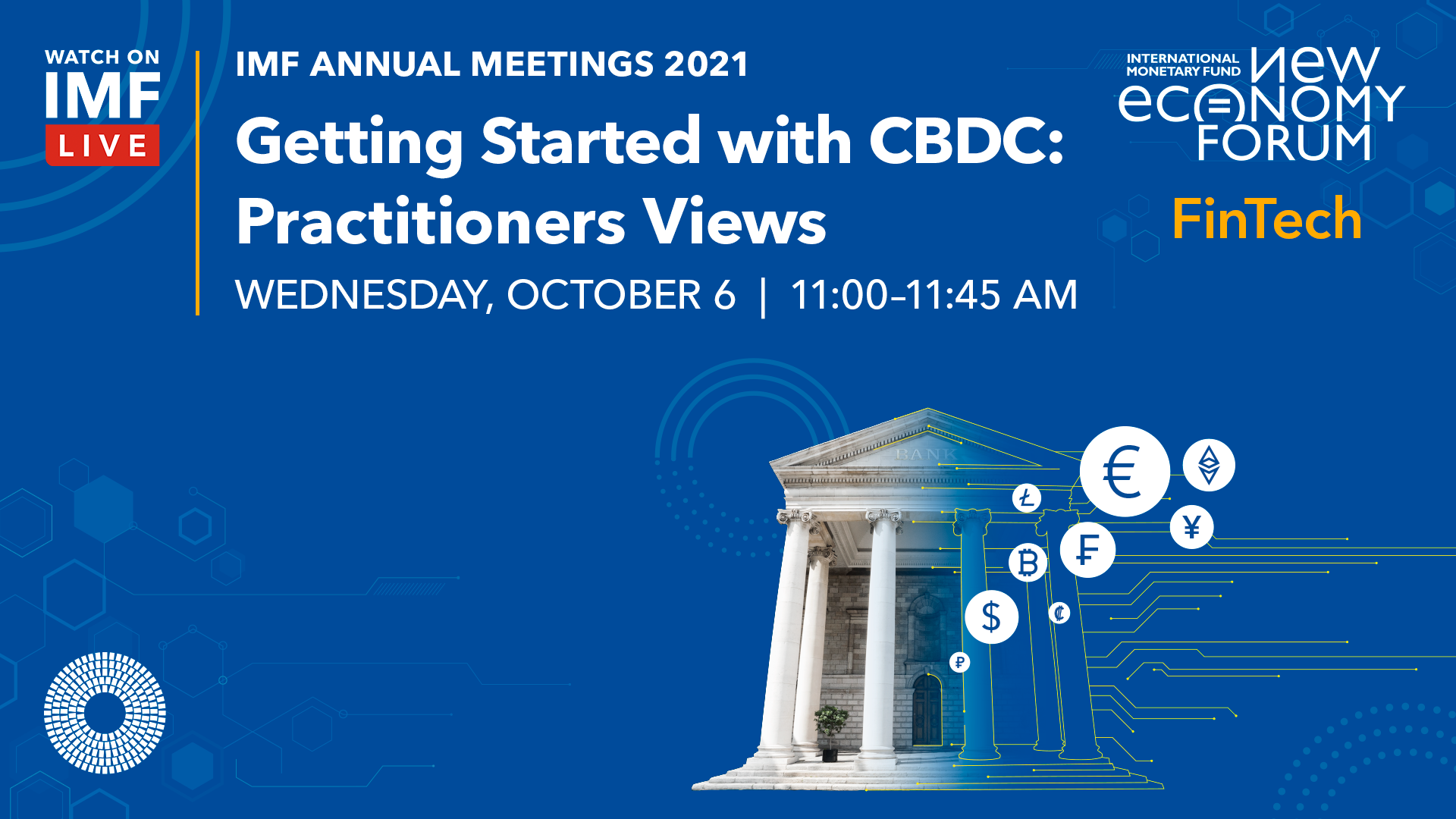Wednesday, Oct 6, 2021 | 12:00 PM - 12:45 PM
Location: IMF Connect

Many central banks have been studying the impact of retail CBDC using different approaches and methodologies. We invited central bankers from around the world to share their lessons learned on how to begin the CBDC exploration journey.
 |
Moderator Sonja Davidovic Digital Expert, IMF
|
 |
Aristides Cavalcante
|
Aristides Cavalcante has worked at Central Bank of Brazil for 23 years. He is Deputy Head of the IT department and Chief of Cybersecurity and Technological Innovation Office. He is in charge of fostering and collaborating in initiatives related to cybersecurity and technological innovation in the Brazilian financial system. Mr. Cavalcante leads the central bank’s on Blockchain technology, and is a member of the working group on CBDC. He is also in charge of the technological coordination on the Open Banking implementation in Brazil.
 |
Nizar Chadded |
Nizar Chadded is Deputy Director General of Development & Oversight of Payments at the Central Bank of Tunisia (CBT). Mr. Chadded has more than 20 years of experience in digital payments, including the management of the CBT’s Innovation LAB, co-foundingthe Regulatory Sandbox and heading the taskforce on CBDC in the CBT. He is also the CBT representative in the National and Regional Committees of payments & financial innovation. Mr. Chadded has expertise with key national projects related to digital payments, including Mobile Payment, E-Payment, Cross border payments, Instant Payments, G2P & P2G, ACH, and RTGS.
 |
Raunak Mittal |
Raunak Mittal is an IT officer at the World Bank Group’s Technology and Innovation Lab. Mr. Raunak leads various emerging technologies and fintech exploration projects in collaboration involving cross-functional experts across the WBG. He is also jointlyleading the work with IMF Digital Advisory team on CBDC technology learning and related technical explorations.
 |
Wee-Kee Toh |
Wee Kee joined the BIS Innovation Hub in May 2021 to lead Project Dunbar with a vision of enabling interoperable CBDCs and connected multi-CBDC platforms. Prior to joining the Innovation Hub on secondment from the Monetary Authority of Singapore (MAS), WeeKee was the Specialist Leader for Distributed Ledger Technology, and led Project Ubin, a collaborative industry project exploring the use of blockchain and DLT for clearing and settlement of payments and securities. With his strong network with the fintech and blockchain community, Wee Kee also led the curation of blockchain and digital currency content for the Singapore FinTech Festival.
Many central banks have been studying the impact of retail Central Bank Digital Currency (CBDC). At this forum, central bankers from around the world shared the lessons learned on how to begin the CBDC exploration journey.
Key Points:
Quotes:
“The question is not how central banks should react to innovation, but how they can be more proactive in developing an increasingly innovative, digital, and inclusive financial system.” Aristides Cavalcante
“CBDC issuance and design is a sovereign decision. We cannot take a model of one jurisdiction and apply it in another. We have to focus on our context.” Nizar Chadded
“[On inter-connected CBDC platforms] We know the vision and the angle. We know what we want to see at the top of the mountain, but we are only in the first steps of getting there.” Wee-Kee Toh
Contributor: Rasheeda Smith Yee